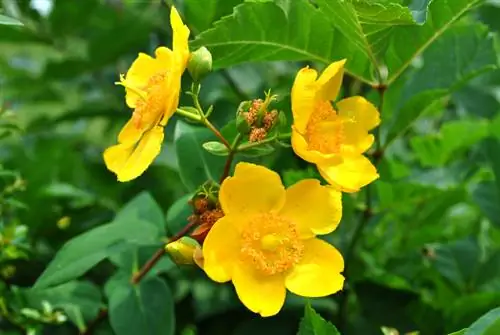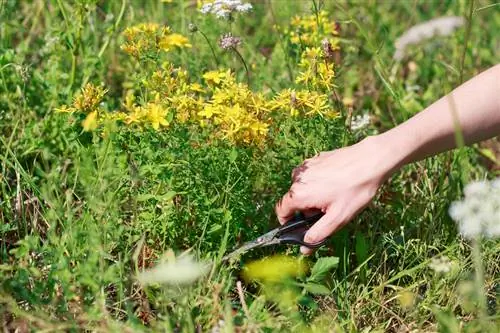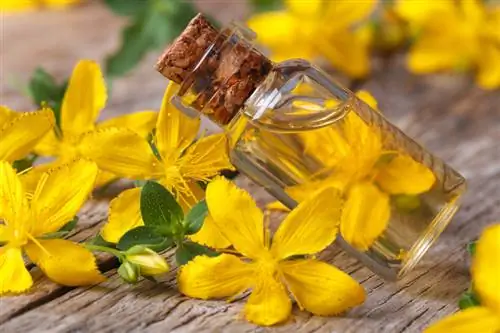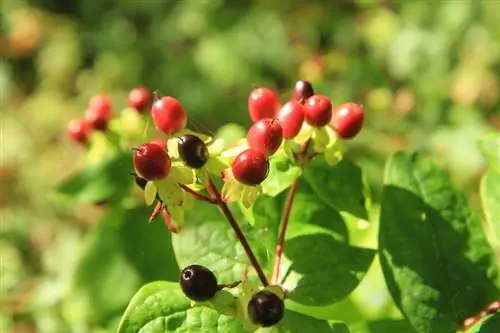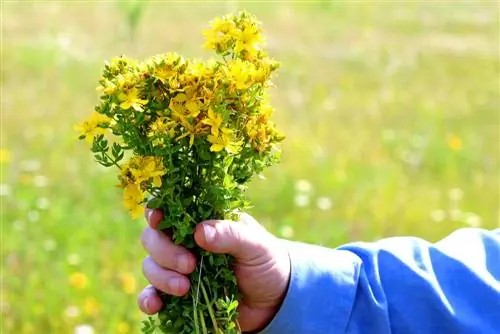- Author admin [email protected].
- Public 2023-12-16 16:46.
- Last modified 2025-06-01 06:02.
St. John's wort is a well-known medicinal herb. It can be a support for depression, bad mood, nervousness, digestive problems and for poorly healing wounds and swellings. Read below how to harvest it and then process it.

How and when is the best way to harvest St. John's wort?
To harvest St. John's wort properly, it is best to collect the upper shoots with flowers during the flowering period from the end of June to July. Cut pieces about 20 cm long and dry them upside down in a dark, dry and airy place for 1 to 2 weeks.
What is being harvested?
You can basically harvest all parts of St. John's wort. But it is gentler on the plant if you only harvest the flowers. The entire above-ground herb including stems and leaves can also be harvested. The berries are usually not collected.
When is harvesting?
The active ingredient content in the plant is highest during the flowering period. Therefore, the perfect harvest period is from the end of June to July. It is ideal to harvest the herb on dry days in the morning.
Cut the cabbage and dry it
You can cut off the entire above-ground herb (or just the flowers) using scissors or a knife, or simply collect with your bare hands. It is recommended not to cut off more than about 20 cm - i.e. the upper shoots with the flowers. This means the plant is not weakened too much.
The shoots are then tied together into small bouquets and dried:
- hang upside down
- do not dry in the sun
- hang in a dry, airy and dark place
- Duration of drying: 1 to 2 weeks
- Alternative: dry in the dehydrator at 40 °C
Uses: tea, tinctures, oils and more
Whether fresh or dried, the leaves and flowers can be used in many ways. Here are a few ideas:
- Tea: the whole herb or the flowers - flowers taste more intense
- Drinkages: the whole herb
- Oils: the flowers (they contain the main active ingredient hypericin)
- Schnaps
- Liqueur
- Herbal spice blends
Tip
Due to its anti-inflammatory and wound-healing properties, St. John's wort oil is said to help with neurodermatitis and psoriasis, among other things.


